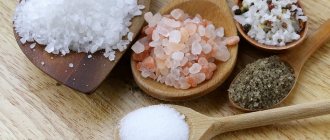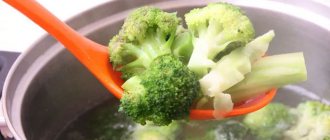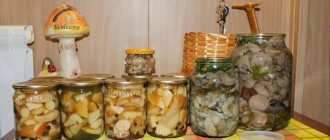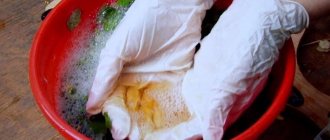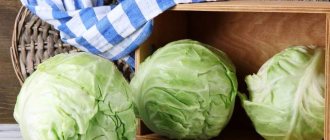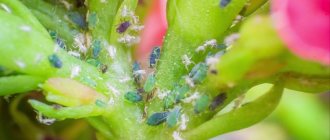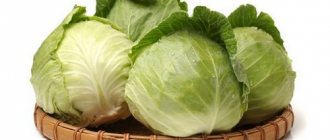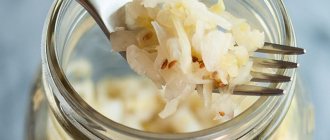Young cabbage of early ripening is most often used by housewives for summer salads. But it turns out that you can also ferment it with success. We bring to your attention a simple, tried and tested recipe for sauerkraut, thanks to which you will enjoy your favorite vegetable snack without waiting for autumn and winter.
Young cabbage contains a lot of calories, but it is rich in fiber and has 4 times the vitamin C content of late varieties. Sauerkraut young cabbage differs from traditional autumn cabbage in its more delicate structure and crunchy properties. To ferment this recipe, you actually don’t need any spices other than salt. And among additional vegetables, perhaps add carrots to enjoy not only the taste of the preparation, but also the color.
Useful articles for gardeners and gardeners
Lunar sowing calendar for 2021 table
Do-it-yourself flower beds are not like everyone else’s interesting ideas photos
Boarding days in June 2021
When to plant cucumber seeds in open ground
But is it possible to ferment young cabbage?
Traditionally, our predecessors did not do this, believing that tender young leaves under the influence of acids would become too soft and stop crunching. It is so indeed!
However, this is not yet a reason to abandon the idea of making delicious sauerkraut. You just need to know how to cook it correctly.
Advice from experienced housewives
Experienced housewives know that it is not enough to know how to properly prepare young cabbage; it must also be preserved. Ideal conditions for winter harvesting are the absence of light and a temperature of 0 ... + 6 ° C. If these standards are observed, products can be stored for a year.
A few more recommendations:
- for preparations it is better to use large heads of cabbage - this will reduce waste and save product;
- carrots grated on a coarse grater give cabbage an attractive appearance;
- It is not recommended to chop young cabbage too thinly - it will stop crunching.
A little about sauerkraut
When fermented, cabbage is not subjected to heat treatment, so its constituent substances are not destroyed and do not lose their beneficial properties. And such a product can be stored for up to ten months.
According to all the rules, cabbage is fermented for at least 3-7 days. Unscrupulous manufacturers use acetic acid to speed up the process: the product is ready in two days, but there is no benefit from it. And the taste is not the same.
Many housewives add sugar to cabbage, which also speeds up fermentation, which should occur naturally. You can sweeten the appetizer when serving.
High-quality sauerkraut, whether industrially or home-made, should turn out juicy and crispy, light straw, slightly yellowish in color, the taste of the right cabbage is a little salty with sourness.
If seasonings and spices were used during preparation, they will slightly affect the shade. Cabbage should be chopped into strips of approximately 5 mm (if thinner, valuable substances are less preserved), without large particles, leaves and stalks. Here is a recipe for sauerkraut.
Further storage
The shelf life of sauerkraut depends on the container and storage location.
- Vegetables pickled in a barrel can be stored in a cellar at a temperature of plus four degrees for eight months.
- Snacks prepared in glass containers can be eaten for three months.
- Pickled cabbage can be stored throughout the winter on the balcony in an enamel bucket. With the onset of severe frosts, it may freeze; it is not recommended to store the thawed product for more than three days.
- Pickled vegetables are stored in a plastic container at a temperature no higher than four degrees for only a week.
Early cabbage allows you to get tasty preparations rich in vitamins. Although such varieties are considered not the best options for pickling, if the recipe is followed, they are successfully used for pickling. After salting, cabbage retains its beneficial substances and can be stored all winter.
Step-by-step pickling of young cabbage: favorite recipe
The beauty of this recipe lies not only in its simplicity and originality. It is equally good for both winter varieties of “capitate” vegetables and for early ones, which are usually not prepared for future use. You need to take tight heads of cabbage with juicy fresh leaves of the same ripening period.
- From washed heads of cabbage we remove the stumps and the top damaged leaves.
- We cut the rest into small slices and put them in a large container (preferably enameled).
- Peel and chop the garlic, peel the beets and grate them on a grater with large holes.
- Wash the parsley and chop it as finely as possible.
- Place cabbage slices in a large enamel container in layers, sprinkling them with beets, parsley and garlic.
- Add salt and sugar to the water, bring it to a boil, stir to completely dissolve the salt and sugar crystals, and turn it off.
- When the filling has cooled to a barely warm state, pour it into a container filled with chopped cabbage.
- In the end, you will need to put something heavy on it and leave it under pressure for a couple of days.
Then all that remains is to spread the finished pickling into clean glass jars, seal with plastic lids and place in a cool place. After 3-5 days you will be able to try home-made fermented crispy cabbage, and leave the rest in the cellar for the time being.
Useful articles for gardeners and gardeners
New moon in June 2021 when from what date to what date
Moon phases in June 2021 by days for landing
How to plant strawberries in open ground in spring?
Waning moon in June 2021: when and from what date?
Selection and preparation of ingredients
Early cabbage varieties ripen in about 130 days from planting. When planning their use in winter preparations, it is important not to miss the moment of technical maturity, when the head of cabbage is still quite dense. If you delay harvesting, the forks will crack and become unsuitable for preservation.
Cabbage suitable for winter harvesting must meet the following requirements:
- leaves are evenly colored, without spots or signs of rotting;
- the fork itself is quite heavy and elastic;
- the leaves exude a pleasant aroma characteristic of cabbage;
- There is no bitterness in the taste.
Before cooking, the vegetable is freed from the upper leaves, washed and dried on a paper towel. Then, cut into 2-4 parts and remove the stalk. The remaining ingredients required by the recipe are also washed, cleaned and dried.
Important! For canning, pickling or pickling, only coarse salt should be used. Under no circumstances should you use iodized or marine products, otherwise the final product will not last long.
Recipe for “Young sauerkraut with horseradish”:
We put horseradish root at the bottom of the jar (if you don’t have it, you can use horseradish root) - it is this that gives the cabbage crunchiness.
We chop the cabbage and stuff it into a jar.
Add 2 tbsp. l. salt and 1 tbsp. l. Sahara.
Fill with cold water.
Place a piece of black bread on top.
Cover with a nylon lid and place in a dark place. Once a day, pierce the cabbage with a knife or stick to the bottom of the jar.
After 2-3 days, the cabbage is ready to eat.
Bon appetit!
Original homemade spicy pickling of early cabbage
Carrot-cabbage “tandem” is one of the most popular, because these vegetables complement each other perfectly. Spices give them a pleasant piquancy and extend the shelf life of the final product.
Ingredients
- Fresh cabbage heads - 3-4 kg;
- Carrots – 1 large root vegetable;
- Purified water – 2.5 l;
- Dried laurel – 2-3 leaves;
- Carnation – 2-3 inflorescences;
- Pepper – 4-5 peas;
- Dill (seeds) – 1 tbsp;
- Vinegar essence – 2 tbsp;
- Sugar - about a glass;
- Salt - to taste.
Quickly preparing young cabbage at home
- Shred the washed and dried cabbage, add grated carrots, salt, and mix gently.
Attention! The recipe assumes the use of vinegar essence. It can be replaced with regular 9 percent vinegar (14-16 tablespoons). The amount of vinegar, salt and sugar varies based on taste preferences.
- To obtain the filling, add spices to the prepared water, add sugar, and boil.
- When the liquid has cooled, you will need to add vinegar essence to it and pour it over the prepared vegetables.
- We knead them slightly, without being too zealous, and leave them like that for 3-5 hours to salt out.
Then all that remains is to thoroughly mix the contents of the pickling container a couple of times, put the pickling into clean jars without sterilizing, close them tightly with plastic lids and store them in a cold place.
The sample can be taken in two days.
Pickling young cabbage in a 3-liter jar
Sauerkraut made according to this recipe with a minimum amount of ingredients turns out tasty and can be stored for a long time.
You will need the following products:
· 2 kilograms of early cabbage;
· one large carrot;
· 2 tablespoons of salt;
· 3 tablespoons of sugar;
· 1.5 liters of water.
The forks are chopped, the carrots are grated. The vegetables are carefully mixed and placed tightly in the bottle. Fill with brine. To prepare it, boil water with salt and sugar and cool.
The bottle is covered with three layers of gauze, kept for three days in a warm room, then taken to the basement, covered with a lid, or placed in the refrigerator. During fermentation, the contents of the jar are pierced several times, starting from the second day. This is done to remove the resulting gases, otherwise the finished product may become bitter and even spoil.
In what cases should you not ferment cabbage in January?
January will not always be the ideal month on the calendar to make sauerkraut.
For example, you should not carry out the procedure if you stored the vegetable back in October or even September. Over time, cabbage loses its density and beneficial properties. The fresher the vegetable, the better.
However, you can go to a store or market and buy a suitable plug there.
Recipe for sauerkraut with apples
Ingredients:
· 5 kilos of fresh cabbage,
· 4-5 sweet and sour apples,
· half a kilo of carrots,
· 110 g coarse salt.
- The cabbage is finely chopped, combined with grated carrots and salt. The ingredients are mixed by hand, but there is no need to grind them.
- A couple of whole cabbage leaves are placed at the bottom of the glass container in which the ferment will take place. Shredded vegetables are added on top. The mass is compacted.
- Next again comes a pair of whole leaves and peeled apples in one row.
- Then there are a couple more cabbage leaves and the remaining shredded cabbage.
- The container will remain loaded for 3 days at room temperature.
Useful articles for gardeners and gardeners
Growing cucumbers in a barrel step by step photo
When to plant cucumber seeds in open ground
Florist's lunar calendar for June 2021 for indoor plants
Lunar calendar for June 2021 for gardeners and gardeners
Helpful tips before cooking
The characteristic crunch, loved by true connoisseurs of the preparation, is obtained only from autumn and winter varieties of white vegetables. Summer cabbage is absolutely not suitable. If you take the wrong base for cooking, no spices, additional ingredients or unique recipes will save the situation. Therefore, you can ferment cabbage so that it is crispy only from late varieties of the vegetable.
For pickling, we recommend the following varieties of cabbage: Belorusskaya 455, Zavodskaya, Kolobok, Biryuchekutskaya 138, Atria F1, Dobrovodskaya, Megaton F1, Kupchikha.
- The larger the cabbage is cut and prepared, the better the nutrients are preserved.
- Do not use iodized salt when pickling.
- Ancestors prepared vegetables for the winter according to the lunar calendar. According to popular belief, it is better to cook on a new moon.
- The ideal place to store the product is glass jars or wooden barrels that have undergone special cleaning with a bleach solution and repeated rinsing with water before cooking. Do not use large aluminum cans. It will spoil the taste.
For chopping, use a wide paring knife. If you prefer thinly sliced cabbage, use a special grater or food processor (if time is limited).
We recommend reading: If You Remove Pears Unripe
